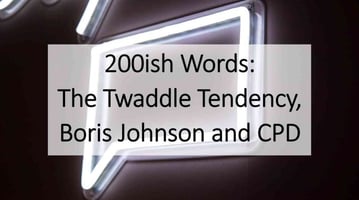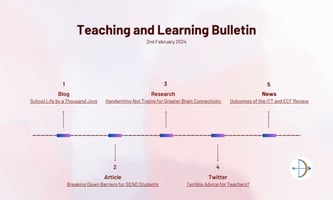Take two groups of teachers…
Constructing Multiple-Choice Quizzes: A Few Extra Bits
A couple of months ago, I wrote a short blog about how I think we can make quizzing a bit more worthwhile. You can read it by clicking here . Since then, a few other bits have come to mind regarding the construction of multiple-choice quizzes that I thought might be helpful.
Put the majority of information in the stem and not the responses. This will reduce the number of ‘redundant’ words and help to focus student attention. Ideally, students should have a tentative idea of what the answer might be before reading the available options.

Aim to make the form and structure of the responses consistent. Making one of the options longer or more technically complex than the others is likely to provide students with a clue that might enable them to select the correct answer without possessing the requisite knowledge.

Aim to make the incorrect responses (i.e. ‘distractors’) seem plausible. Responses that are clearly incorrect won’t meaningfully test student knowledge. Ideally, they should be sufficiently inaccurate to be considered wrong, but also reasonable enough to seem right so that effortful thinking is required to rule them out.

Spread the correct answers equally across the response options. This will avoid creating a pattern that might help students to guess the answers. Aim to use each response option as the correct answer (e.g. 1, 2, 3 and 4) roughly the same amount of times.
Thanks for reading –
Doug


.jpg?width=50&name=douglas-wise%20(2).jpg)


